A pome is a fruit with a juicy outer layer and a firm central core that usually holds seeds inside a small capsule. Essentially, what makes them unique is their structure. At the center, they have a “core” that holds several small seeds. That core is wrapped in a tough, papery layer, and all of it is surrounded by the juicy, edible flesh we enjoy. On the outside, a thin skin protects the fruit.
Think of it like this: the skin is the protective jacket, the juicy part is what we eat, and the core is the seed-holder. Apples and pears are the most familiar examples, but there are plenty of others too.
To give you a clearer picture of pome fruits, here are 18 familiar examples, along with explanations of why they qualify as pome fruits and a few interesting details about each.
1. Apples
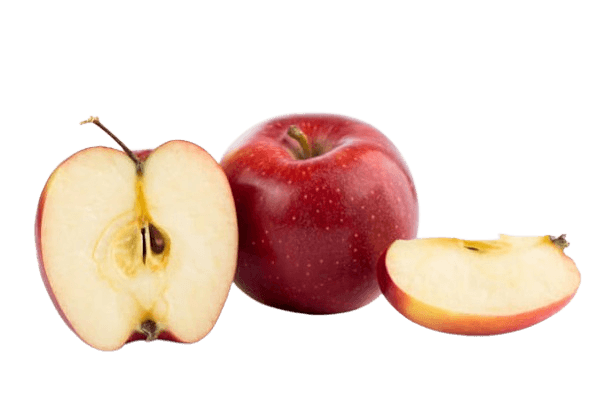
Apples are probably the most famous pome fruit, with thousands of varieties grown worldwide. What makes them a pome is the structure: a fleshy edible layer surrounds a core made of several seed chambers, each with one or two seeds. The crisp, juicy flesh actually develops from the flower’s base, not the ovary itself. Apples come in countless flavors and textures, enjoyed raw, baked, juiced, or turned into cider.
2. Pears
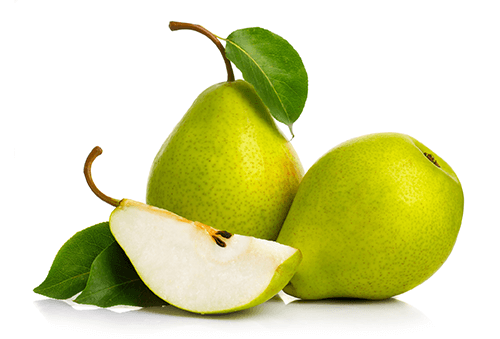
Pears are another classic pome fruit, instantly recognizable by their soft, juicy texture and distinctive shape. Like apples, they have a central seed-filled core enclosed by a tough membrane, with sweet flesh formed from the flower’s receptacle. There are thousands of varieties around the world, eaten fresh, poached, canned, or pressed into perry. Beyond their flavor, pears are also valued for being fiber-rich and full of beneficial plant compounds.
3. Quinces
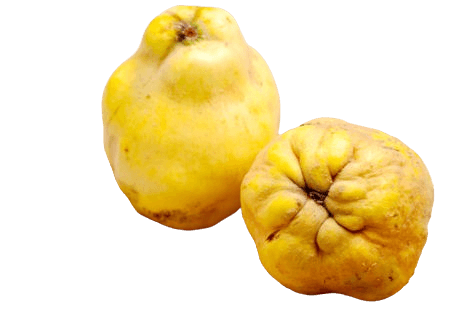
Quinces are pome fruits that look a lot like lumpy pears but have their own charm. Their golden-yellow skin hides firm, aromatic flesh with a tough core of seeds. Unlike apples or pears, quinces are usually too hard and tart to eat raw, but when cooked they transform into fragrant jams, jellies, or desserts. The pome structure is clear—an edible outer layer surrounds the many-seeded core.
4. Medlar
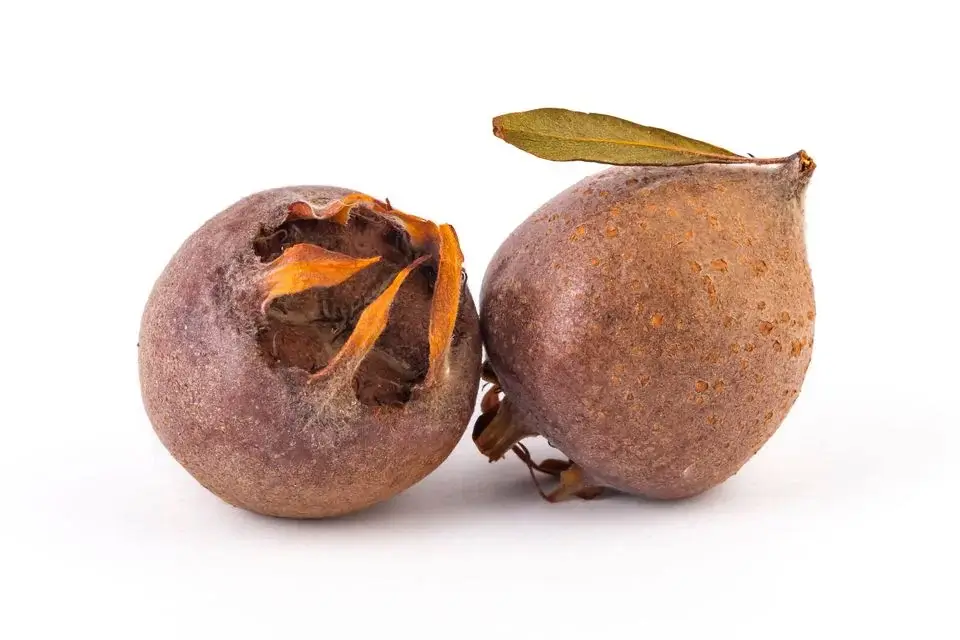
The medlar is an old-fashioned pome fruit that has been enjoyed since Roman times. Its small, brown fruits contain a seed-filled core like other pomes, but the flesh only becomes edible once the fruit softens, a process called “bletting.” When ready, the flavor is sweet and mellow, sometimes compared to applesauce with a touch of spice. Medlars can be eaten as they are or turned into jellies, chutneys, or even syrups.
5. Rowan
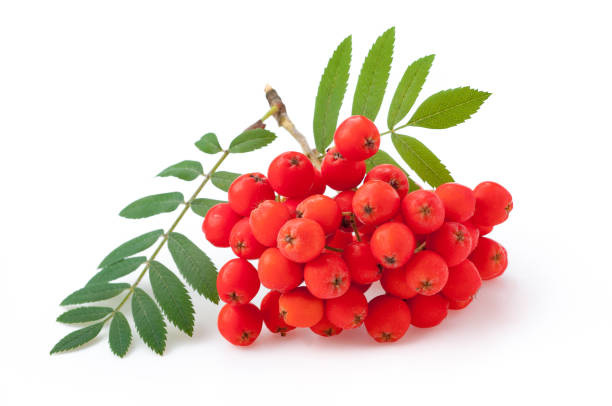
Rowan trees, often called mountain-ash, produce clusters of tiny fruits that look like bright red or orange berries. Each fruit has a small core with seeds inside, showing their pome structure. Although the flesh is not usually eaten raw because it’s quite sour, rowan fruits have been used in jams, wines, and even traditional remedies. Their colorful pomes also feed birds and wildlife well into winter, making them ecologically important.
6. Asian Pear (Nashi)
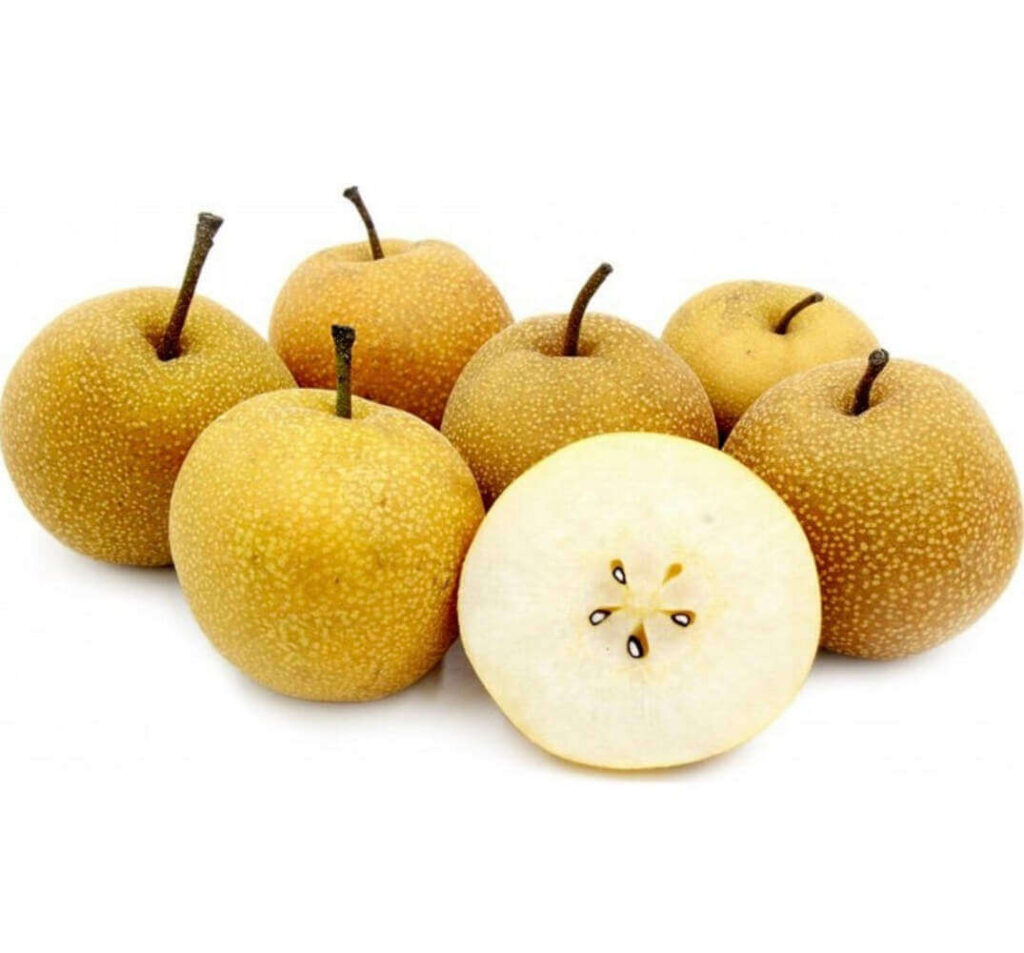
Asian pears are crisp, juicy pomes often nicknamed “apple pears” because of their shape and texture. Like all pomes, they contain a firm core of seeds in the center, surrounded by edible flesh that develops from the flower’s receptacle. Unlike European pears, which soften as they ripen, Asian pears stay crunchy even when fully mature. They are popular across Asia and beyond, eaten fresh, sliced into salads, or stored for months.
7. Crab Apple
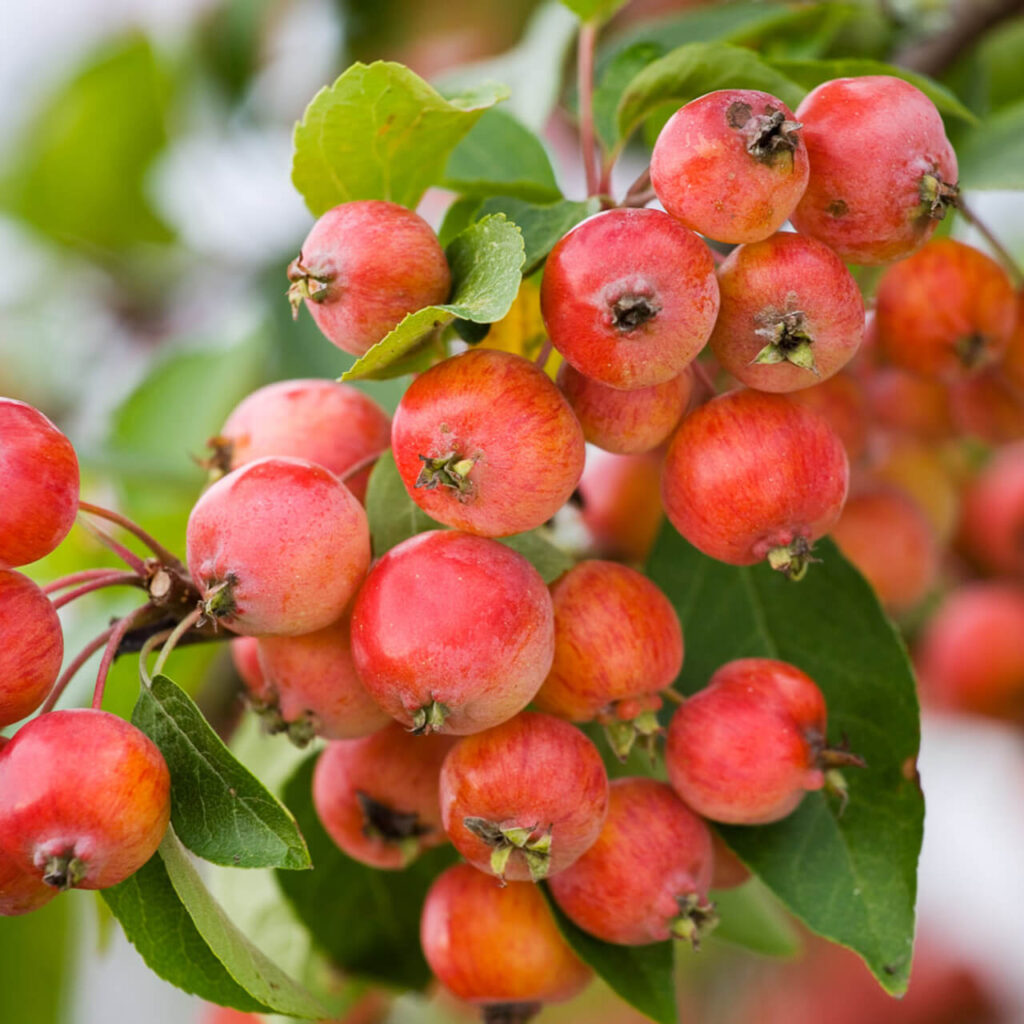
Crab apples are the smaller, wild relatives of orchard apples. Despite their size, they are true pomes with the same basic structure: fleshy outer layers surrounding a central core with several seed chambers. Their tart flavor makes them less popular for eating raw, but they shine in jellies, sauces, and ciders. Crab apples also play an important role in pollination, as many cultivated apple trees rely on them for cross-pollination.
8. Hawthorns

Hawthorns produce small, berry-like fruits called haws, but botanically these are pomes. Each fruit has a fleshy outside and a core containing one to five hard seeds. These tough seeds give the fruit a “stone-like” quality, though the structure is closer to apples than plums. Hawthorns have a long history of use in herbal medicine, and while the fruits are not always eaten fresh, they are used in jellies, teas, and syrups.
9. Juneberry (Serviceberry)

Juneberries might look like blueberries at first glance, but they are actually pomes, closely related to apples and pears. Inside their small, purple fruits lies a tiny core with seeds, surrounded by edible flesh. Sweet and juicy when ripe, they are excellent for eating fresh or baking into pies and muffins. Native to North America, juneberries are also a valuable food source for birds and wildlife during summer.
10. Aronia (Chokeberry)
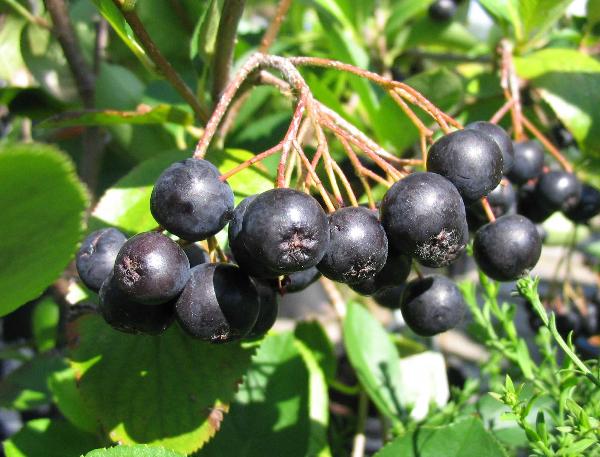
Aronia, or chokeberry, produces small, dark fruits that are packed with nutrients, especially vitamin C and antioxidants. Like other pomes, each fruit has a fleshy outer layer enclosing a tiny seed-filled core. The berries are very tart and astringent when eaten raw, hence the name “chokeberry,” but they shine when processed into juices, wines, jams, or teas. They are also valued as ornamentals, with their glossy fruit clusters persisting into autumn.
11. Pyracantha (Firethorn)

The bright orange-red berries of the Pyracantha shrub are actually pomes. Each fruit has soft pulp around a small, hard core containing seeds. While the pulp is technically edible, it’s bland, and the seeds, like those of apples, contain small amounts of cyanogenic compounds, so they’re not eaten raw. However, the fruits can be safely cooked into jellies.
12. Mayhaw

Mayhaw trees, native to southern U.S. wetlands, produce small fruits about the size of cherries. Their structure mirrors other pomes: a fleshy edible layer surrounds a central core of seeds. Mayhaw fruits are usually tart, making them better suited for cooking than eating raw. They’re most famous for mayhaw jelly, a beloved southern specialty. Ranging in color from yellow to deep red, these fruits ripen in late spring, giving rise to their name.
13. Governor’s Plum (Flacourtia indica)
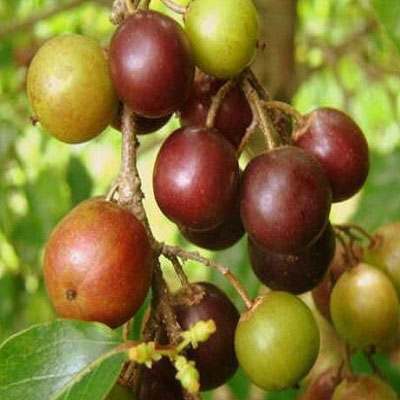
Governor’s plum, despite its common name, is a small pome fruit native to Africa and Asia. Each reddish-purple fruit has a thin skin, juicy sweet-and-sour pulp, and a seed-filled core. They can be eaten fresh or made into jams, preserves, and even wines. Beyond food use, the tree has roles in folk medicine and provides forage for animals. Its adaptability and productivity make it a valuable fruit tree in tropical regions.
14. Cotoneaster
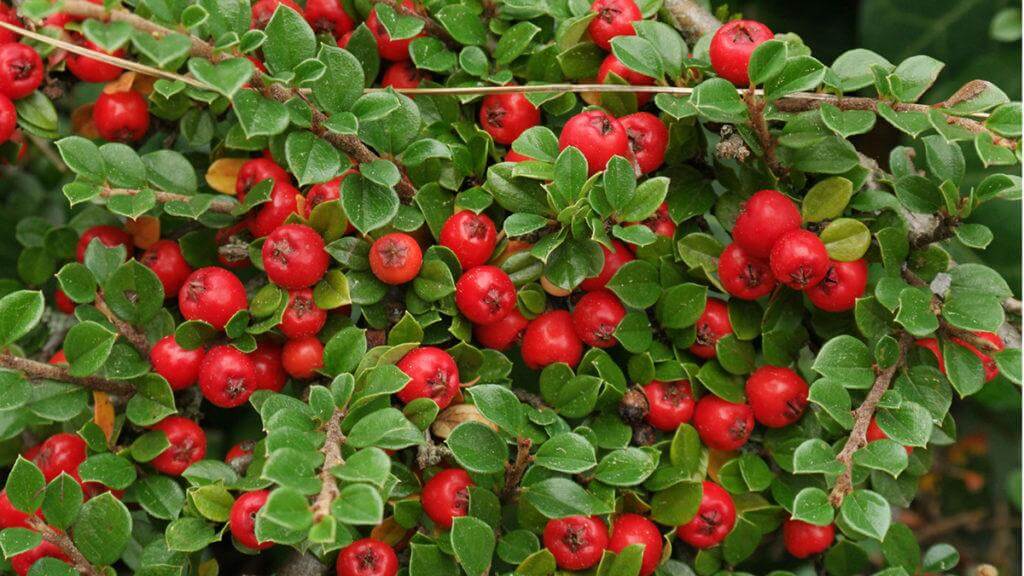
Cotoneaster shrubs produce clusters of small, colorful pomes in shades of red, orange, or even black. Each berry-like fruit is less than half an inch wide and contains a tiny core with one to three seeds. While not generally eaten fresh due to their bland taste, cotoneaster pomes are sometimes used in jellies. Their greatest value lies in ornamental planting, as the vivid berries persist into winter and provide food for birds.
15. Shipova
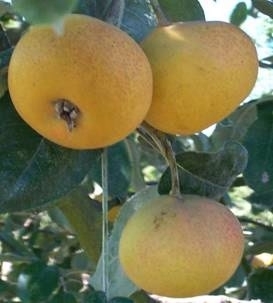
The shipova is a rare hybrid pome, born from a cross between a pear and a whitebeam (a type of Sorbus). Its small, pear-shaped fruits have a fleshy outer layer and seed-filled core like all pomes. What makes shipova special is its flavor: creamy, sweet, and aromatic, with tropical hints of guava or pineapple. The fruits can be eaten fresh or cooked, though they are quite rare outside specialty orchards.
16. Toyon (Christmas Berry)
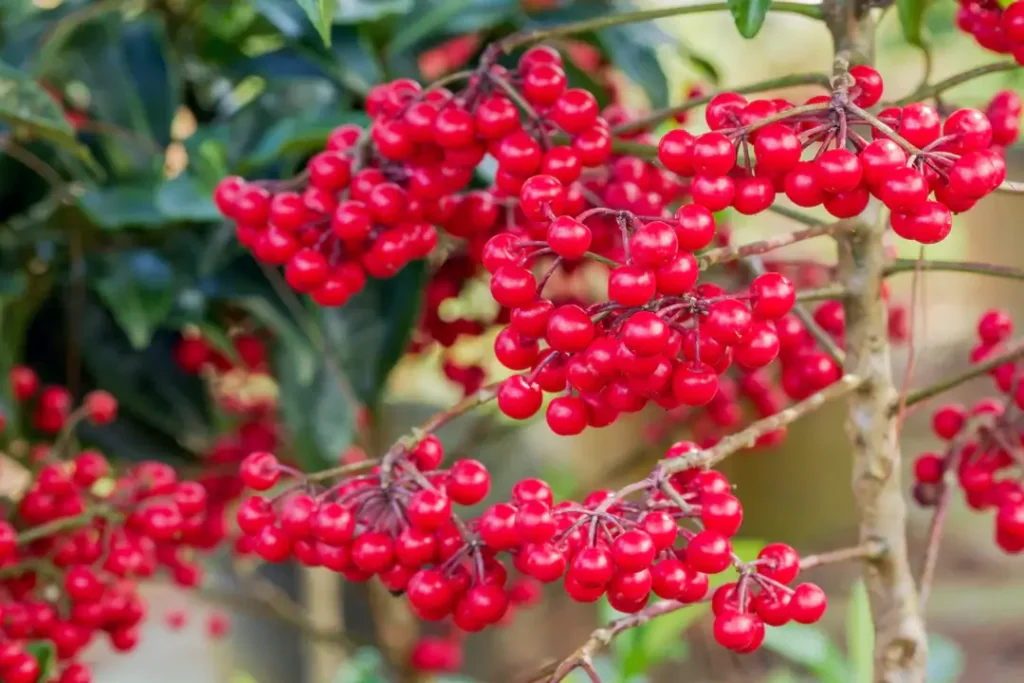
Toyon, also called Christmas berry, is a California native shrub that produces clusters of bright red pomes. Each small fruit has fleshy outer tissue surrounding a hard core with seeds. Although not typically eaten raw, they were historically roasted or dried by Indigenous peoples for food. Today, toyon is better known for its ecological and ornamental value, feeding birds through winter and brightening landscapes with its festive, berry-like pomes.
17. Whitebeam
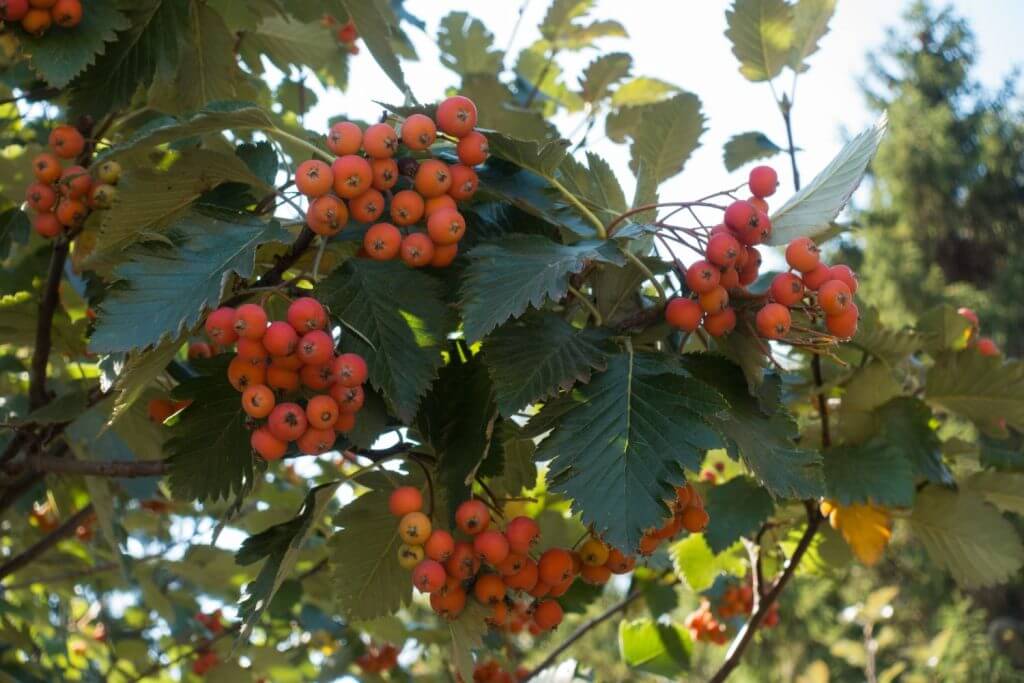
Whitebeam trees, members of the Sorbus genus, bear clusters of small red fruits in autumn. Each fruit has the typical pome structure, with juicy flesh enclosing several tiny seeds. While not often eaten fresh, the fruits can persist well into winter, feeding birds when other food is scarce. The striking contrast of white-felted leaves and bright red pomes has also made whitebeam popular as a street and garden tree across Europe.
18. Khirni (Manilkara hexandra)
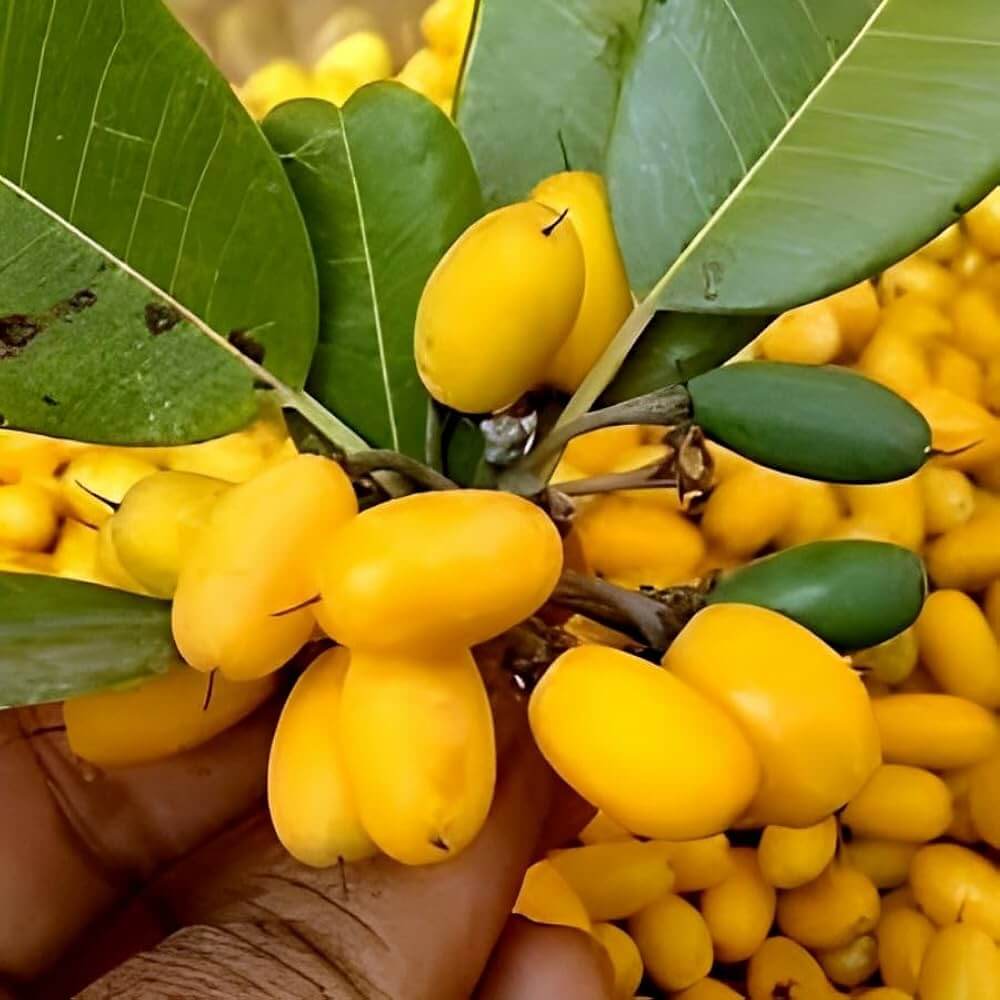
The khirni tree produces small, round fruits that are sometimes mistaken for drupes but are in fact pomes, with edible flesh surrounding a seed-filled core. Native to the Indian subcontinent and Southeast Asia, khirni fruits are sweet and are eaten fresh or used in traditional medicines. The tree is also valued for its timber and latex, making it economically important.
Discover Other Fruit Category Examples:
- Examples of Dehiscent Fruits
- Examples of Schizocarp Fruits
- Examples of Sorosis Fruits
- Examples of Accessory Fruits
- Examples of Follicle Fruits
- Examples of Stone Fruits
- Examples of Drupe Fruits
- Examples of Capsule Fruits
- Examples of Multiple Fruits
- Examples of Aggregate Fruits
- Examples of Achene Fruits
- Examples of Fleshy Fruits
